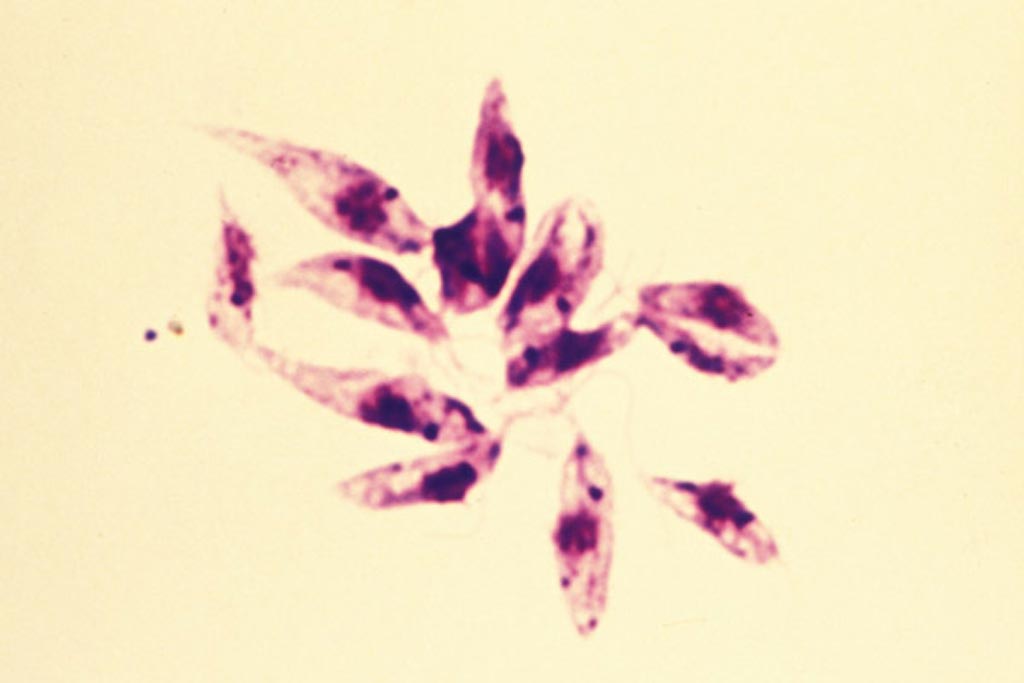Unusual Sugar Facilitates Long-Term Survival of Leishmania Parasites
By LabMedica International staff writers
Posted on 23 Sep 2019
A team of British and Australian parasitologists has determined that the Leishmania parasite is able to survive for long periods of time in human immune cells due to its ability to synthesize the non-canonical carbohydrate reserve, mannogen, which is composed of beta-1,2-mannan oligosaccharides.Posted on 23 Sep 2019
Leishmania is a genus of protozoan parasites that is responsible for the disease leishmaniasis, which currently affects around six million people in 98 countries. The parasites are spread by sandflies of the genus Phlebotomus in the Old World, and of the genus Lutzomyia in the New World. At least 93 sandfly species are known or probable vectors worldwide. The primary hosts of the parasites are vertebrates; Leishmania commonly infects hyraxes, canids, rodents, and humans.

Image: The infective promastigote form of the Leishmania parasite is transmitted by sandflies (Photo courtesy of Wikimedia Commons).
Leishmania parasites are able to persist for many years in their human host by sequestering themselves inside immune cells, such as macrophages. The infected macrophages may eventually generate large granuloma lesions that can lead (depending on the species of parasite and host immune status) to open ulcerating sores, organ damage and, in some cases, death.
The molecular basis of long-term survival of the parasites within host cells was not known. Recently, however, investigators at the University of York (United Kingdom) and the University of Melbourne (Australia) reported the discovery that Leishmania were able to synthesize the non-canonical carbohydrate reserve, mannogen, which is composed of beta-1,2-mannan oligosaccharides. Furthermore, the investigators identified a class of dual-activity mannosyltransferase/phosphorylases (MTPs) enzymes that catalyzed both the sugar nucleotide-dependent biosynthesis and phosphorolytic turnover of mannogen.
Structural and phylogenic analysis showed that while the MTPs were structurally related to bacterial mannan phosphorylases, they constituted a distinct family of glycosyltransferases that had likely been acquired by horizontal gene transfer from gram-positive bacteria. The seven MTPs catalyzed the constitutive synthesis and turnover of mannogen. This metabolic “rheostat” protected the obligate intracellular parasite stages (amastigotes) from nutrient excess, and was essential for thermotolerance and parasite infectivity in the mammalian host.
Senior author Dr. Malcolm McConville, professor of molecular parasitology and microbiology at the University of Melbourne, said, "As mannogen metabolism is critical for the survival of these parasites, developing inhibitors to block the enzymes that regulate this carbohydrate store is a potential way to specifically kill Leishmania parasites. We can exploit the parasite's food preference for mannogen and specifically target this metabolic pathway, without side effects to humans. Similar enzymes and carbohydrates are made by other pathogens, such as the bacteria that cause tuberculosis, and this work may contribute to developing new classes of drugs to treat other infectious diseases."
The Leishmania study was published in the September 11, 2019, issue of the journal Cell Host & Microbiology.
Related Links:
University of York
University of Melbourne














